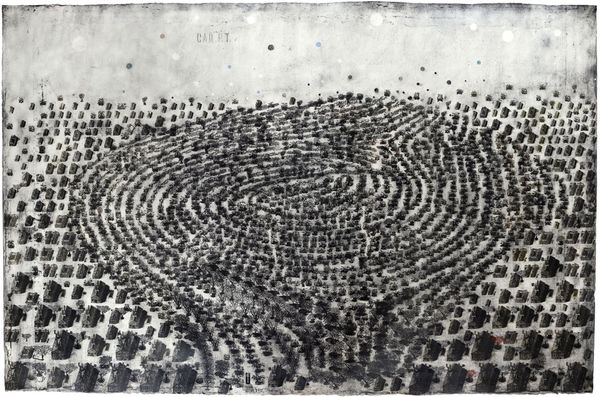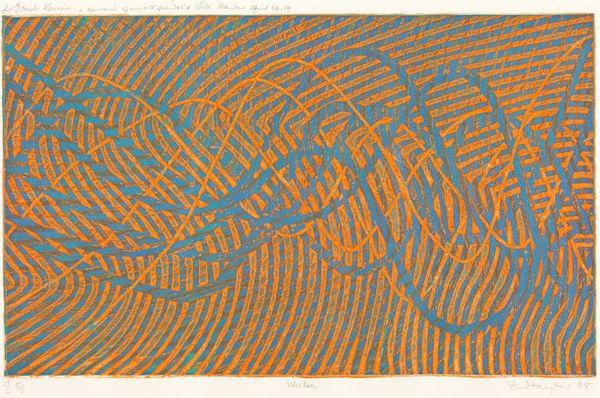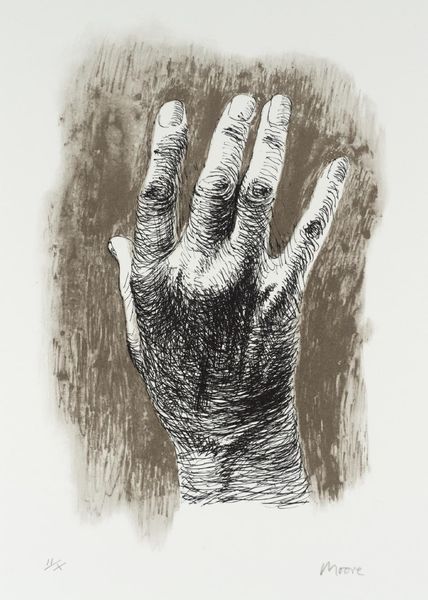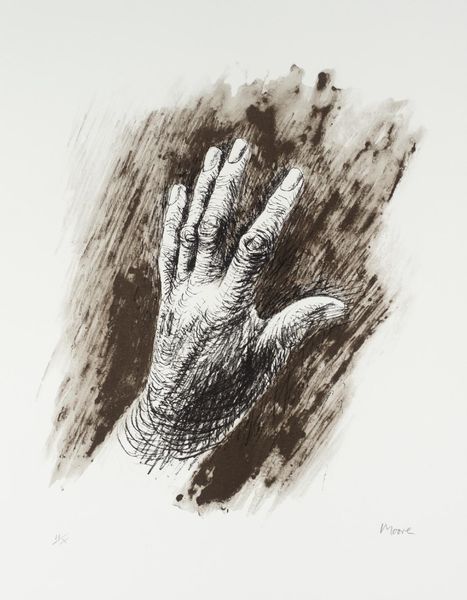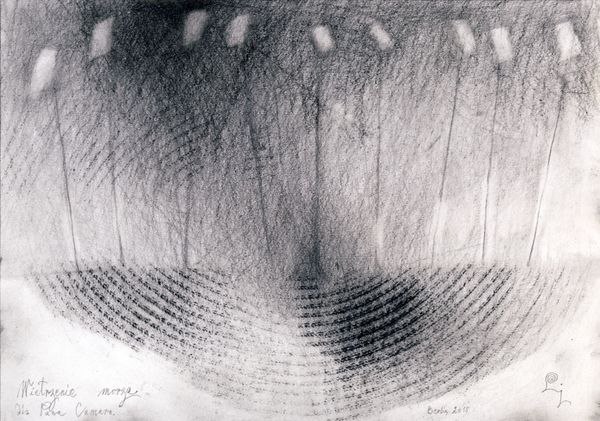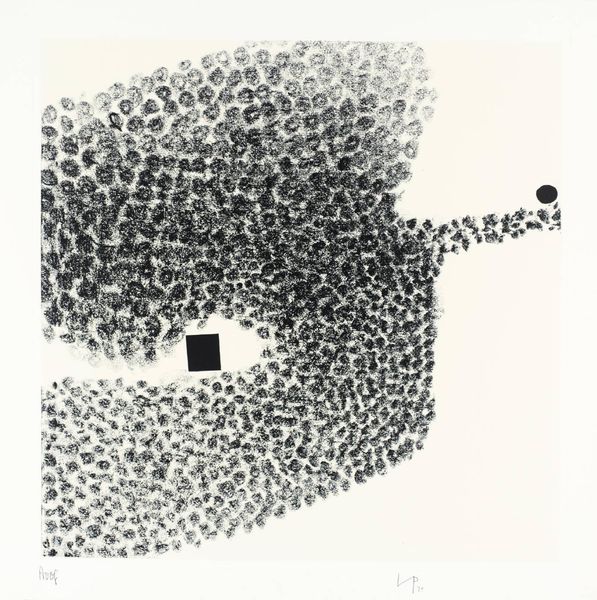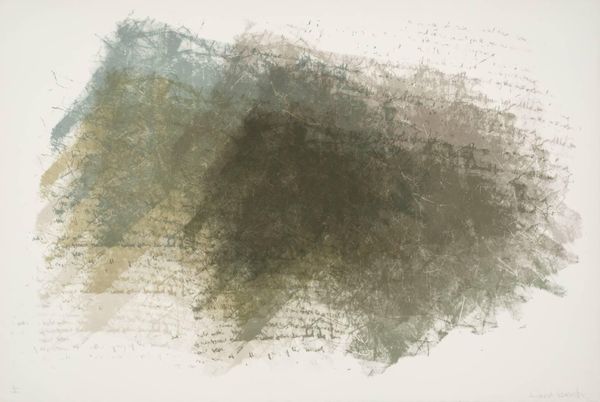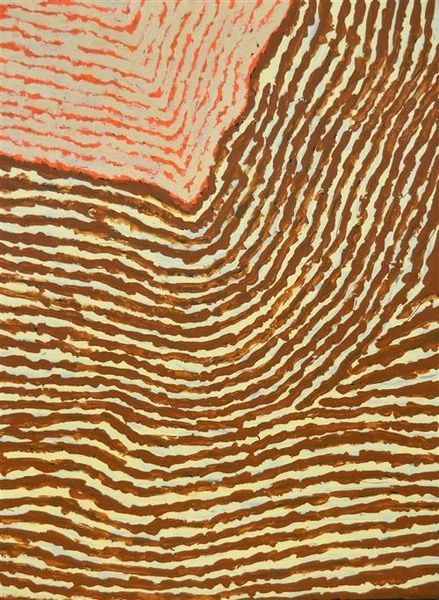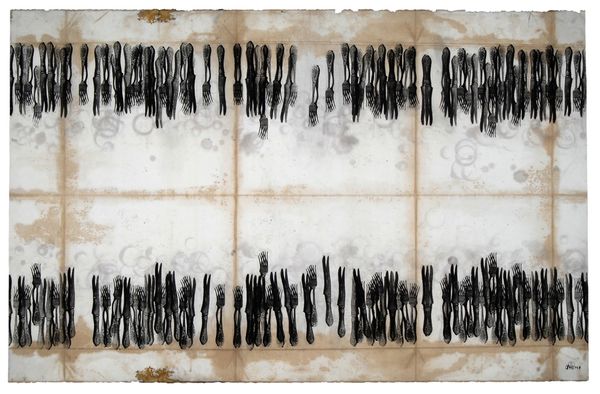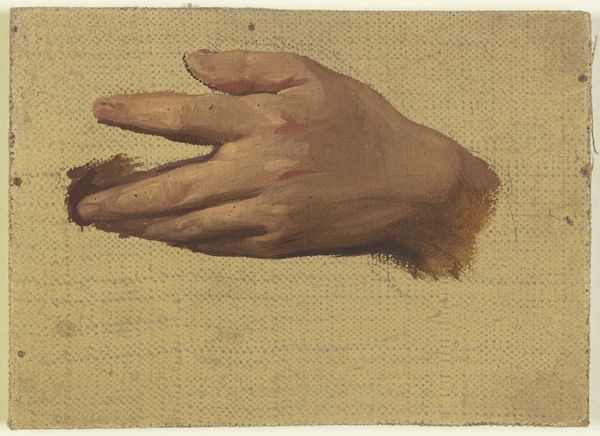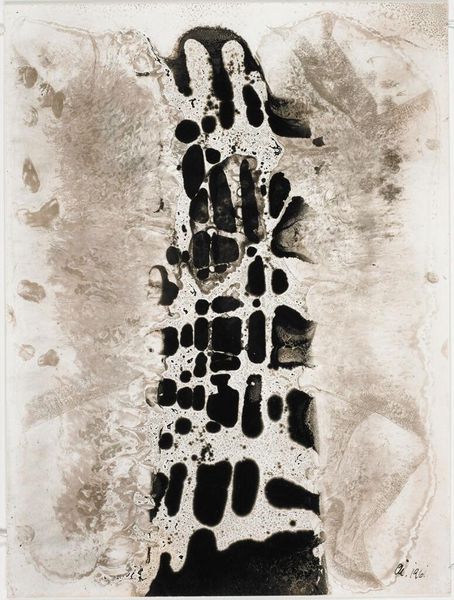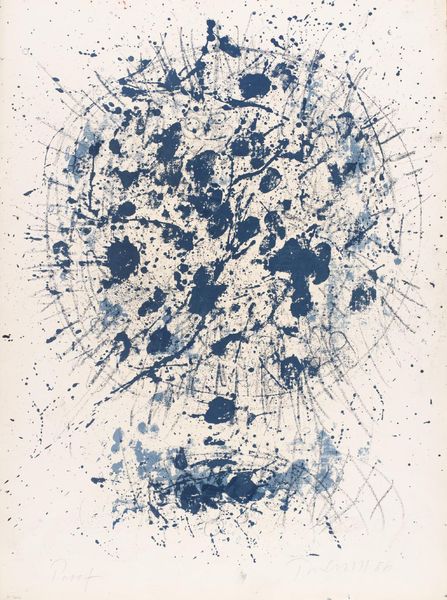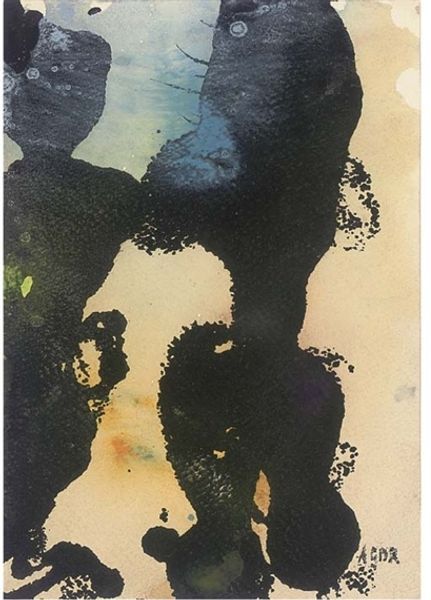
mixed-media, print
#
abstract expressionism
#
mixed-media
#
contemporary
# print
#
appropriation
#
figuration
#
abstract-art
#
line
#
abstract composition
#
abstract art
#
identity-politics
Copyright: Nalini Malani,Fair Use
Editor: Nalini Malani’s "Limits of Identity," created in 2009 using mixed-media printmaking, presents an immediate paradox. It feels both incredibly personal, like a fingerprint, and disturbingly anonymous with the figures obscured within. What readings can we find when looking at it through the lens of its cultural context? Curator: That is an astute observation. Malani's work frequently addresses themes of displacement and the fragmentation of identity within postcolonial India. Given this, how do you interpret the superimposition of the figures upon the fingerprint? Does it suggest a loss of individual agency? Editor: That's interesting, it does evoke a feeling of being lost or trapped *within* an imposed identity. The figures almost seem to be struggling against it, adding a layer of social commentary. Do you think her choice of medium plays a part in that narrative? Curator: Absolutely. Printmaking allows for reproducibility, reflecting the standardization and categorization inherent in systems of power. Think about how these systems affect marginalized communities; could the 'limits' of identity be externally imposed rather than self-defined? The use of mixed-media adds further complexity; could these materials represent a kind of resisting palimpsest, obscuring easy readings, forcing us to consider the historical baggage surrounding identity and representation? Editor: I see your point, that makes so much sense. The mixed-media could be visual metaphors for layers of historical trauma that are impacting our understanding of identity today. I’m really getting so much more from it now. Thank you. Curator: Indeed. Art becomes a powerful tool in revealing uncomfortable truths and inciting meaningful discussion of our present reality. Reflecting on the relationship between identity and imposed structures offers insights for all of us.
Comments
No comments
Be the first to comment and join the conversation on the ultimate creative platform.
